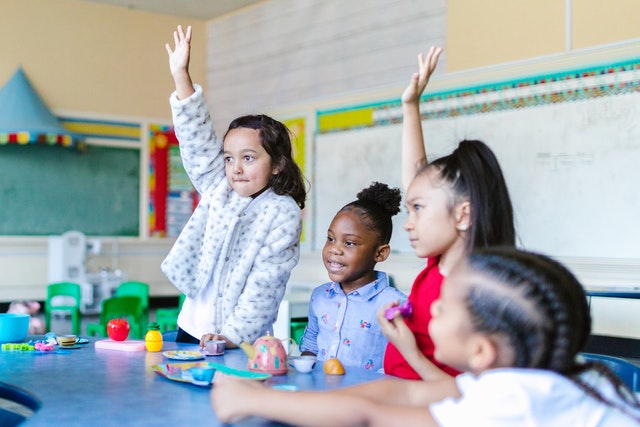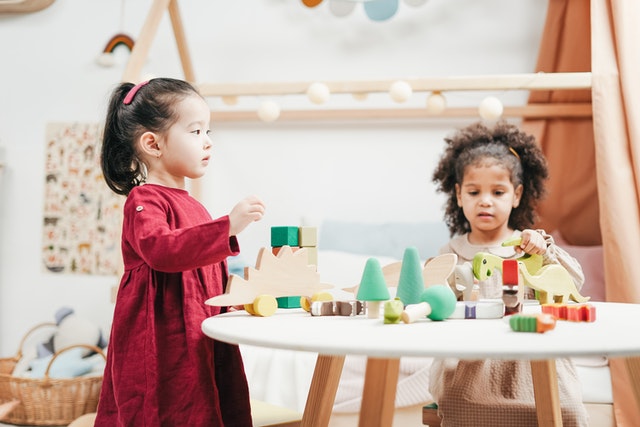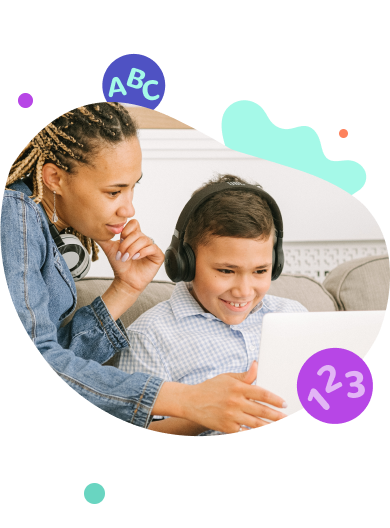As a teacher, you know that different students learn in different ways. Some students need more help than others to understand new material. That’s where scaffolding strategies come in. Scaffold learning is a teaching technique that supports students as they learn new material. This guide will teach you everything you need to know about scaffold learning, from what it is to how you can use it in your classroom.
Math & ELA | PreK To Grade 5
Kids see fun.
You see real learning outcomes.
Watch your kids fall in love with math & reading through our scientifically designed curriculum.
Parents, try for free Teachers, use for free
What are Scaffolding Strategies in Learning?

Scaffold learning is a term that refers to the process of providing students with temporary or partial support to help them complete a task or reach a goal. The support can come in the form of physical scaffolding, like a ladder or platform that allows someone to climb to a higher level, or it can be more abstract, like providing hints or clues to help solve a problem.
The term “scaffold learning” is often used in educational contexts, referring to the support teachers provide to students as they learn new material. When scaffolding learning in the classroom, teachers break down tasks into smaller parts and assist in the way. This step-by-step approach helps students understand new concepts and build on their prior knowledge.
Strategies for Implementing Scaffold Learning

There are many ways to implement scaffold learning in your classroom. Here are some scaffolding strategies that you can use with your students:
1. Pre-teach Vocabulary
One of the best ways to scaffold learning is to pre-teach vocabulary. When students are familiar with the words they will be using, they can focus on understanding the meaning of the words instead of trying to figure out what they mean. Pre-teaching also helps build vocabulary skills, which will come in handy throughout the student’s academic career.
2. Modeling
Modeling is another scaffolding strategy that teachers can use to introduce new material. When you model a task, you show students how to do it through demonstrations, verbal explanations, or written instructions. After you have modeled the task, give students a chance to practice it. It will help them understand and apply the material in their own lives.
3. Think-Alouds
Think-Alouds are a type of modeling that involves thinking aloud as you solve a problem. This strategy is beneficial because it allows students to see how they think about the situation. It also allows you to model different problem-solving methods. As you think aloud, explain your thought process and why you are making the decisions you are.
4. Use Visual Aids
Visual aids are a great way to scaffold learning. Teachers can use them to introduce new material, reinforce concepts, and provide support for struggling learners. Visual aids can take many forms, such as charts, diagrams, pictures, and videos. When using visual aids, explain what they are and how Teachers can use them to support learning.
5. Provide Practice Opportunities
Practice is an essential part of scaffold learning. It allows students to apply what they have learned in a safe and supportive environment. When providing practice opportunities, give students clear instructions and ample time to complete the task. You may also want to give students a chance to share their work with the class.
6. Give Feedback
Nothing is more important than feedback when using scaffold learning in your classroom. Feedback helps students understand what they are doing well and what they need to work on. It also shows them that you are paying attention to their progress. When giving feedback, make it specific, positive, and helpful.
7. Encourage Questions
Questions are a part of scaffold learning. They allow students to check their understanding, clarify concepts, and get more information. When encouraging questions, create a safe and supportive environment where all questions are welcome.
8. Gradual Release of Responsibility
The gradual release of responsibility is a scaffolding strategy that gradually gives students more control over their learning. You can do this by providing scaffolded instruction and releasing responsibility to the students. As students show they are ready, you can give them more opportunities to lead their learning.
9. Connections to Prior Knowledge
Educators can help scaffold new material by incorporating it with information that students have already learned. Teachers can make scaffolding more effective and improve learning outcomes by connecting the new material to what students know.
10. Differentiated Instruction
Differentiated instruction is another scaffolding strategy to be used in the classroom. This scaffolding strategy involves providing different levels of support to students based on their individual needs. By differentiating instruction, teachers can ensure that all students have the opportunity to learn and succeed.
Why Use Scaffold Learning in Your Classroom?

There are many reasons to use scaffold learning in your classroom. Here are just a few:
1. Helps Students of All Levels
Scaffold learning is beneficial for students of all levels, from those who are struggling to those who are gifted. For struggling students, scaffolding provides the support they need to engage with new material. Scaffolding can challenge talented students to think critically and apply their knowledge in new ways. By providing enrichment opportunities, scaffolding can help talented students reach their full potential.
2. Builds Confidence
With scaffold learning, students build confidence as they master new concepts. They feel a sense of accomplishment when they can complete tasks that were once difficult. This confidence carries over into other areas of their lives, inside and outside the classroom.
3. Fosters Independence
Independence is another important outcome of scaffold learning. As students gain confidence and mastery, they become more independent learners. They can take what they have learned and apply it to new situations. This independence leads to a lifetime of successful learning.
Let’s Scaffold Some Learning!

Scaffolding requires planning and effort, but it is worth it when you see the difference it makes in your students’ learning. Use these scaffolding strategies in your classroom to support your students as they learn new material. And, don’t forget to scaffold your learning by connecting further information to what you already know!
Frequently Asked Questions
How can scaffolding be used in the classroom?
Scaffolding is used in the classroom by incorporating scaffolded instruction into your lesson plans. This is done using scaffolding strategies such as modeling, providing practice opportunities, and giving feedback. Scaffolding is beneficial because it allows students to learn new information more effectively.
What is the difference between scaffolding and visual learning?
Visual learning is a scaffolding strategy that can support students as they learn new material. Visual aids, such as charts, diagrams, pictures, and videos, can be used for scaffold learning. However, scaffolding is not limited to visual aids. It also includes strategies such as modeling and providing practice opportunities.
What makes scaffolding effective?
Scaffolding is effective because it makes learning more accessible to students. Teachers can help students understand new concepts and retain information more effectively by providing scaffolded instruction. Additionally, scaffolding allows students to have greater control over their learning.
























